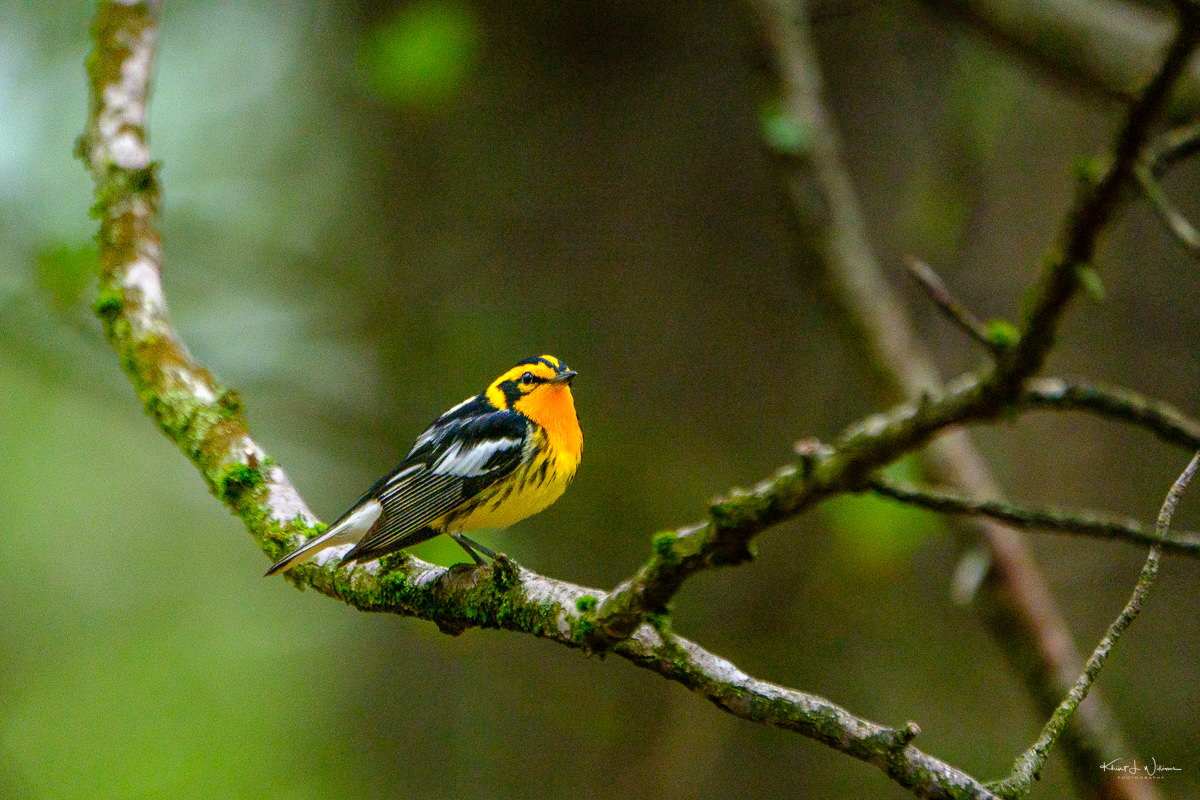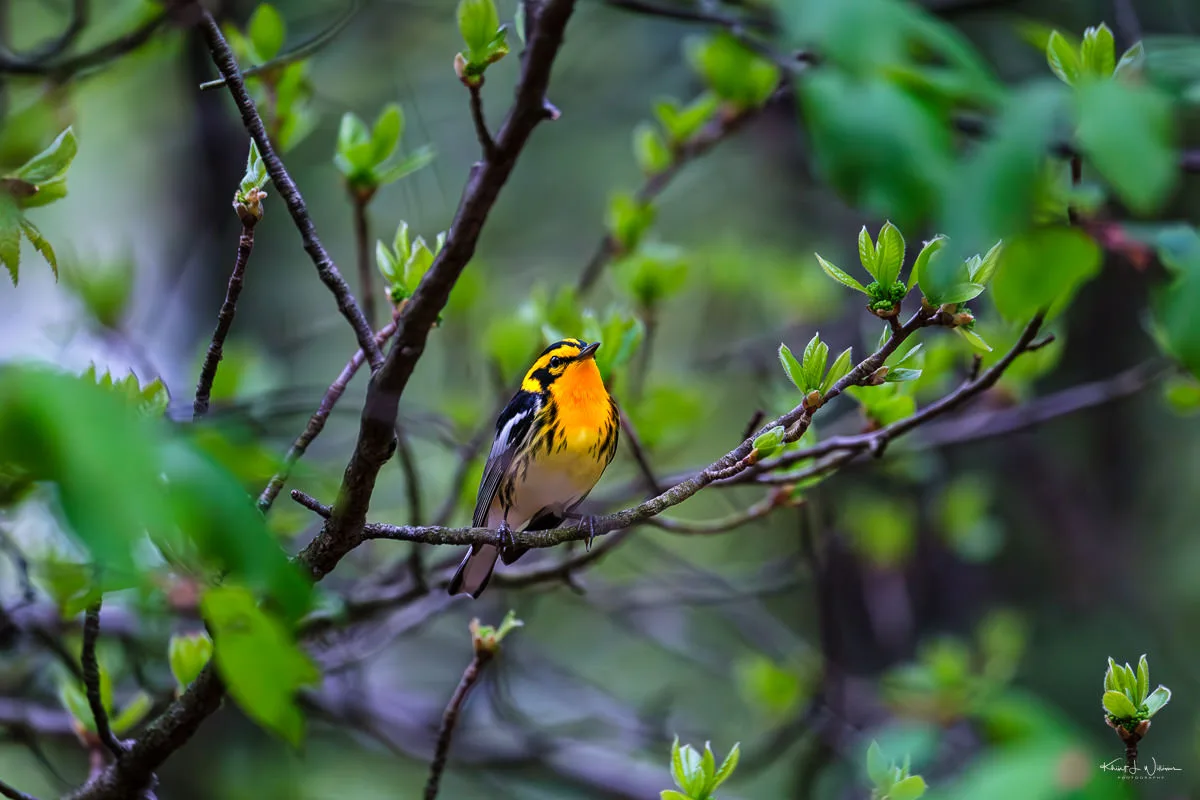This is the second workshop that I have booked with Ray Hennessey. When I registered for Ray's workshop, it was mainly because I was attracted to the flame-orange throat of the Blackburnian Warbler (Setophaga fusca).
The Blackburnian Warbler (Setophaga fusca) is a vibrantly coloured bird, noted for its striking orange and black plumage on the face and throat, which is incredibly vivid during the breeding season. They are often found in coniferous forests and are a brilliant spectacle for any bird enthusiast. Ray had his camper van set up in a Stokes State Forest Park, a state park in Sandyston, Montague and Frankford in Sussex County, New Jersey.
Ray knew just where to go, and this bird was very cooperative, flying between the surrounding branches of the shorter trees. We found this individual near the area where we photographed the Black-throated Green Warbler. We waited patiently for the bird to rest in just the right spot. His throat seems to glow. I learned that no other North American warbler has an orange throat.

Photographing these tiny birds is a challenge. We would find a spot with a confusion of Warbler and stand around, waiting for the bird to come down from the trees and land on an open branch. The bird may land in a leafy tree or shrub and is either fully or partially obscured by leaves or stems. Sometimes, the bird is facing away from the camera. Getting a good photograph requires time, patience, and lots of luck. But the results are rewarding.


@khurtwilliams really nice capture, Sir.
Another fantastic photo. I know what you mean about these being challenging to photograph. It really does require so much patience, especially when not using lures of any kind. So often they seem to congregate in the areas where you just can't photograph, or at least not well. But every so often they'll find a very pleasing perch, and that creates such a great experience for the photographer.
Thank you, Todd. I too love this one.